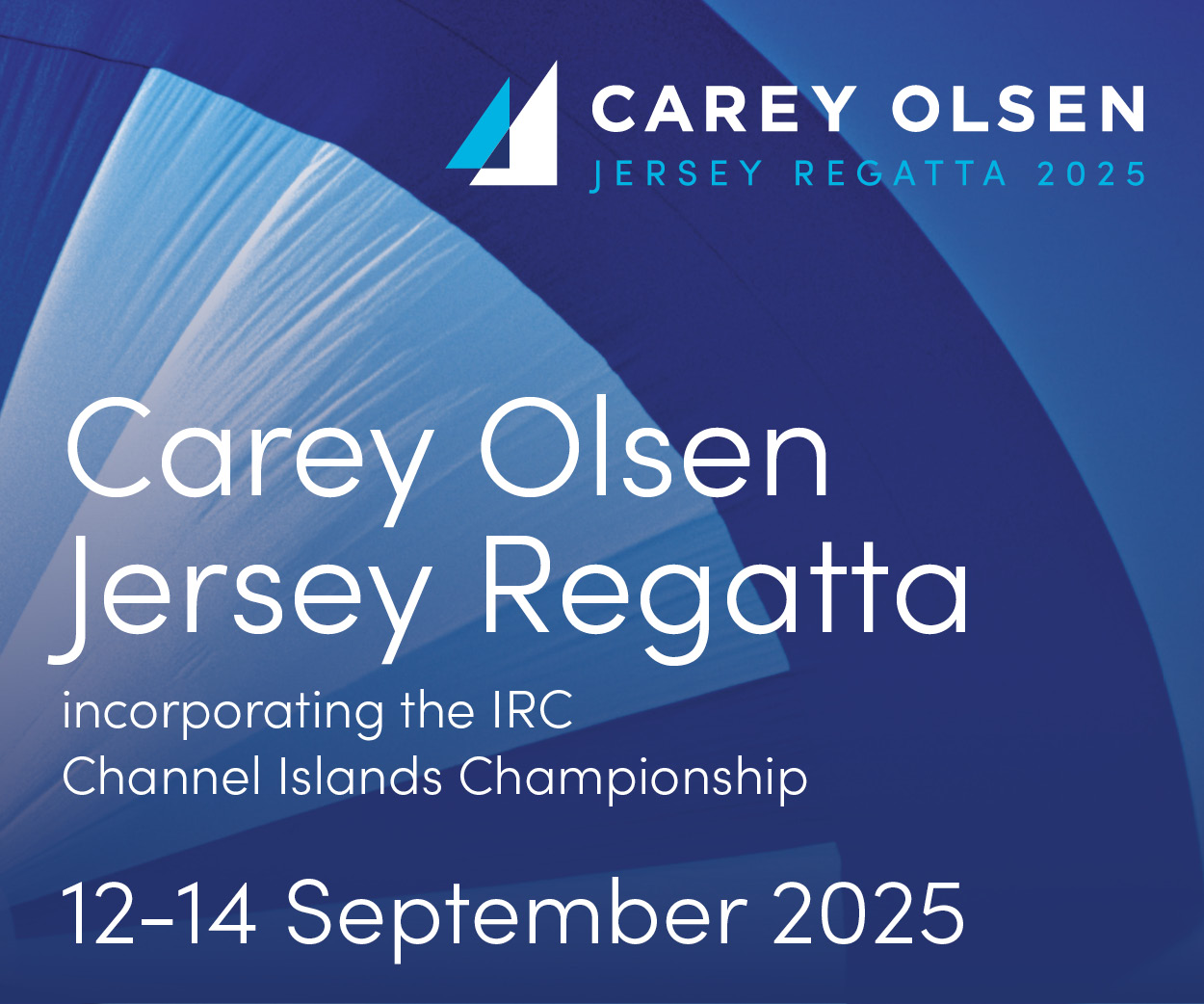












| Rossiter Pintail Mortagne sur Gironde, near Bordeaux |
 |
| Laser 28 - Excellent example of this great design Hamble le rice |
 |
List classes of boat for sale |
Who's right of way at Leeward Mark? |
Post Reply 
|
Page 12> |
| Author | |
ohFFsake 
Far too distracted from work 
Joined: 04 Sep 08 Location: United Kingdom Online Status: Offline Posts: 219 |
 Post Options Post Options
 Quote Quote  Reply Reply
 Topic: Who's right of way at Leeward Mark? Topic: Who's right of way at Leeward Mark?Posted: 19 Oct 09 at 9:20pm |
|
Bit of a weird one this, largely due to the weather conditions, which were something of a drifting match!
We are sailing on starboard tack on a dead run, approaching a leeward mark to be left to port.My intention is to gybe fairly close to the mark and round up in a smooth arc so as to lose as little way as possible. Meanwhile, a smaller dinghy is approaching from our right on port tack. He is sailing slightly higher and faster, but is still well astern at 3 lengths. At about one and half boat lengths from the line we bear off towards the mark and gybe. As we do so the other dinghy crosses behind us aiming between us and the mark and says we fouled him by not giving him sufficient opportunity to keep clear (presumably meaning as we gybed). Not wishing to end up in a battle we altered course away from the mark and let him in. To be honest I was so surprised by his cheek in barging in that in the split second we needed to avoid a collision I didn't have time to analyse it properly. This ended up costing us several places as our extra course alteration more or less stopped us dead and another boat then comprehensively rolled over us (as I said - it was a bit of a drifter...!) So, two questions: Am I right in my assumption that as I was clear ahead at 3 lengths I can basically make any course change I need to sail my proper course round the mark, including gybing as was necessary in this instance? My belief is that in open water we would have fleetingly lost ROW during the moment we gybed but gained it again as leeward boat immediately afterwards; in which case the only onus on me would be (a) not to hit him during the instant of the gybe, and (b) not to alter course in doing so in such a way as to prevent him keeping clear. But in the circumstances of us being clear ahead as we entered the mark zone, am I correct in thinking that neither of these obligations apply. The only other issue is that I never hailed to say that he had no overlap, simply because it was blindingly obvious that none existed. Does this have any bearing? |
|
 |
|
Brass 
Really should get out more 
Joined: 24 Mar 08 Location: Australia Online Status: Offline Posts: 1151 |
 Post Options Post Options
 Quote Quote  Reply Reply
 Posted: 20 Oct 09 at 12:54am Posted: 20 Oct 09 at 12:54am |
|
Under the 2009 RRS, right of way does not change near marks. What you get is exoneration under rule 18.5 if you do not keep clear when a right of way rule (rules 10, 11, 12, 13) requires it. It is very doubtful that an opposite tack boat approaching a leeward mark close enough for there to be an incident will be clear astern at the zone. She is almost certain to be overlapped. See the diagram But it makes very little difference whether you are clear ahead or overlapped inside at the zone, the outside port tacker (O) must still give you (I) mark-room under rule 18.2(b). This is in addition to keeping clear under rules 10, 11, and 12. There is no change in right of way in this scenario. Applicable rules change, but right of way does not. Initially, O on port must keep clear of I on starboard (rule 10). When I gybes, O will momentarily come clear astern and must keep clear of I clear ahead (rule 12), then I will become overlapped to leeward and O must keep clear (rule 11). While I is sailing to the mark, and until I is at the mark, if I changes course, I must give O room to keep clear under rule 16. Once I is at the mark, I may change course to sail her proper course at the mark and I will be exonerated under rule 18.5 if she does not give O room to keep clear. In the case described, O kept clear of I therefore I did not fail to give O room to keep clear. O is always obliged under rule 14 to avoid contact if reasonably possible. Did you hail 'protest', fly a red flag (if necessary) and follow through with a protest? If not O will never learn. |
|
 |
|
ohFFsake 
Far too distracted from work 
Joined: 04 Sep 08 Location: United Kingdom Online Status: Offline Posts: 219 |
 Post Options Post Options
 Quote Quote  Reply Reply
 Posted: 20 Oct 09 at 1:33am Posted: 20 Oct 09 at 1:33am |
|
Thank you for that very comprehensive explanation.
I think we may well have been your "doubtful" case, as at 3 lengths we were actually pretty much dead running, if not slightly by the lee. But as you say, this has no bearing, as long as the blue boat wasn't overlapped on the inside, which they clearly weren't. The only worry I have is this statement...
In this instance, we were turning in a steady arc to round close to the mark, and O's course was such that he would collide with us just after we gybed. It would seem that his theory was that he didn't have to anticipate this course alteration, and thus expected me to alter course slowly enough to give him room to start responding after we'd gybed. To do so would effectively mean that he would gain sufficient room to round inside us (which in fact is what happened). So perhaps the crucial point is how soon am I entitled to turn to round a leeward mark. In the general case by the time we are "at" the mark we would generally have already done pretty much all the turning we are going to do and would aim to be close hauled! If the presence of a late barging give way boat means that we can't now alter course until we are "at" the mark then the net result will typically be the loss of 2 or 3 boatlengths to leeward as we round up after the mark, leaving a gap big enough for the other boat to sneak through and gain the advantage. Or does the presence of the mark change our obligation under rule 16, insofar as our course alteration is actually our "proper course" and therefore ought to be anticipated by the other boat? I didn't protest, thinking it better to properly clarify the rules and then have a quiet word before the next race... [edited to add] ...or does "at" the mark in your post mean within 3 lengths of it? Edited by ohFFsake |
|
 |
|
Brass 
Really should get out more 
Joined: 24 Mar 08 Location: Australia Online Status: Offline Posts: 1151 |
 Post Options Post Options
 Quote Quote  Reply Reply
 Posted: 20 Oct 09 at 2:20am Posted: 20 Oct 09 at 2:20am |
|
To understand better about to and at the mark, read about the roundabout analogy here A right of way boat is not obliged to begin to take avoiding action to keep clear of another boat that will acquire right of way before that boat does acquire right of way. A boat that has right of way is not obliged to anticipate that another boat will break the rules (Case 27). A boat entitled to right of way or room or mark-room need not act to avoid contact until it is clear that the other boat is not keeping clear or giving room or mark-room (rule 14(a)). Otherwise, of course a boat that is obliged to keep clear of you is obliged to anticipate. Read the definition of keep clear. You are entitled to start changing course to round a mark any time you please as long as, if you are not yet at the mark, you give a boat required to keep clear of you, room to keep clear when you change course. It may seem a bit circular, but once you are close enough to the mark that any sane person would be changing course to get around it, you are pretty much at the mark. Maybe,to put it another way, once your proper course is to change course around the mark, you are at it. I reckon that once you are inside one boat length of the mark, you are at it. So, I think it is fair to say, in this case, once you reach the point on Stbd, where your proper course is to gybe and sail round the mark, you are entitled to bang through the gybe and slam the door in O's face as hard as you like, as long as you don't hit her.
Edited by Brass |
|
 |
|
gordon 
Really should get out more 
Joined: 07 Sep 04 Online Status: Offline Posts: 1037 |
 Post Options Post Options
 Quote Quote  Reply Reply
 Posted: 20 Oct 09 at 8:18am Posted: 20 Oct 09 at 8:18am |
|
Not only can you close the door, but as inside overlapped right of way boat who must gybe to sail her proper course at the mark you were obliged until you gybed to sail no further from the mark than needed to sail your proper course (rule 18.4). Your gybe was not unexpected - it was obligatory!
Gordon |
|
|
Gordon
|
|
 |
|
ohFFsake 
Far too distracted from work 
Joined: 04 Sep 08 Location: United Kingdom Online Status: Offline Posts: 219 |
 Post Options Post Options
 Quote Quote  Reply Reply
 Posted: 20 Oct 09 at 9:24pm Posted: 20 Oct 09 at 9:24pm |
|
Thanks ever so much for all that excellent analysis. The "roundabout" analogy explains the situation admirably.
Next time I shall "gybe and be damned..." 
|
|
 |
|
Brass 
Really should get out more 
Joined: 24 Mar 08 Location: Australia Online Status: Offline Posts: 1151 |
 Post Options Post Options
 Quote Quote  Reply Reply
 Posted: 20 Oct 09 at 11:10pm Posted: 20 Oct 09 at 11:10pm |
|
Just don't go hitting anybody |
|
 |
|
Rupert 
Really should get out more 
Joined: 11 Aug 04 Location: Whitefriars sc Online Status: Offline Posts: 8956 |
 Post Options Post Options
 Quote Quote  Reply Reply
 Posted: 21 Oct 09 at 8:47am Posted: 21 Oct 09 at 8:47am |
|
Of course, if the act of keeping clear for the other boat involves them going into or the wrong side of the mark, then that is their hard luck. Maybe they will plan better next time... Edit - I guess if the mark is large and solid and can cause damage, they would have to be given room to avoid it? Edited by Rupert |
|
|
Firefly 2324, Puffin 229, Minisail 3446 Mirror 70686
|
|
 |
|
jeffers 
Really should get out more 

Joined: 29 Mar 04 Location: United Kingdom Online Status: Offline Posts: 3048 |
 Post Options Post Options
 Quote Quote  Reply Reply
 Posted: 21 Oct 09 at 12:08pm Posted: 21 Oct 09 at 12:08pm |
|
I was always told the way to do this is give the room and protest. That way you have covered your own a**e.....
|
|
|
Paul
---------------------- D-Zero GBR 74 |
|
 |
|
Brass 
Really should get out more 
Joined: 24 Mar 08 Location: Australia Online Status: Offline Posts: 1151 |
 Post Options Post Options
 Quote Quote  Reply Reply
 Posted: 21 Oct 09 at 11:17pm Posted: 21 Oct 09 at 11:17pm |
No. 19.1 When Rule 19 Applies Rule 19 applies between boats at an obstruction except when it is also a mark the boats are required to leave on the same side. However, at a continuing obstruction, rule 19 always applies and rule 18 does not. So, unless the mark is big enough to be a continuing obstruction, a boat owing another mark-room that gets inside has absolutely no right to room while the entitled boat is sailing her proper course at the mark. A generous minded protest committee might allow that a ginormous navigation mark or a big pile structure was a continuing obstruction say to a tiny little optimist, but if it's surrounded by navigable water, then there's not much case. |
|
 |
|
Post Reply 
|
Page 12> |
| Forum Jump | Forum Permissions  You cannot post new topics in this forum You cannot reply to topics in this forum You cannot delete your posts in this forum You cannot edit your posts in this forum You cannot create polls in this forum You cannot vote in polls in this forum |
Copyright ©2001-2010 Web Wiz
Change your personal settings, or read our privacy policy











 Printable Version
Printable Version Delicious
Delicious Digg
Digg Facebook
Facebook Furl
Furl Google
Google MySpace
MySpace Newsvine
Newsvine reddit
reddit StumbleUpon
StumbleUpon Twitter
Twitter Windows Live
Windows Live Yahoo Bookmarks
Yahoo Bookmarks Topic Options
Topic Options
